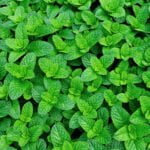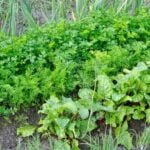Are bone and blood meal good for vegetable gardening? Many gardeners rely on these organic fertilizers to promote healthy and thriving vegetable gardens. Bone and blood meal are natural products that provide essential nutrients to plants, making them valuable additions to any gardening arsenal. In this article, we will explore the benefits and potential drawbacks of using bone and blood meal in vegetable gardening, as well as best practices for application and common misconceptions about these popular fertilizers.
Bone meal is a rich source of phosphorous, which is essential for healthy root development and flower/fruit production in plants. Blood meal, on the other hand, is high in nitrogen, promoting robust leafy growth in vegetables. By understanding the specific benefits of these natural fertilizers, gardeners can make informed decisions about incorporating them into their gardening routine.
While bone and blood meal offer numerous advantages for vegetable gardening, it’s crucial to consider potential drawbacks as well. These include the risk of attracting unwanted pests such as rodents or raccoons due to the scent of blood meal, as well as environmental concerns related to sourcing these products sustainably. Additionally, some plants may be sensitive to high levels of phosphorus found in bone meal, requiring careful application to avoid nutrient imbalances.
As we delve deeper into this topic, we will also discuss how to apply bone and blood meal effectively in various types of vegetable gardens – from raised beds to container gardens. We will explore alternatives to bone and blood meal for those seeking organic fertilizer options and address common misconceptions surrounding their use.
Finally, expert tips for incorporating bone and blood meal into your vegetable garden will be provided for a comprehensive guide to maximizing their benefits while minimizing potential drawbacks.
Benefits of Using Bone and Blood Meal for Vegetable Gardening
Bone and blood meal are organic fertilizers that can provide numerous benefits to vegetable gardening. Here are some of the advantages of using bone and blood meal for your vegetable garden:
- Rich source of nutrients: Bone meal is high in phosphorus, which is essential for promoting healthy root development and flowering in vegetables. On the other hand, blood meal is a good source of nitrogen, which supports vigorous vegetative growth. When used together, these two organic fertilizers can provide a balanced supply of nutrients for your vegetable plants.
- Long-lasting effects: Both bone and blood meal have slow-release properties, which means that they gradually break down and release nutrients over an extended period. This can result in more sustained growth for your vegetables and reduce the need for frequent reapplication of fertilizers.
- Soil conditioning: In addition to providing essential nutrients, bone and blood meal can also help improve the overall structure and fertility of the soil. They encourage microbial activity and enhance the soil’s ability to retain moisture, making it more conducive to healthy plant growth.
It is important to note that while bone and blood meal offer several benefits for vegetable gardening, there are also potential drawbacks and considerations to keep in mind. It is recommended to use them sparingly as excessive application can lead to nutrient imbalances or environmental concerns. Additionally, some gardeners may prefer alternatives such as compost or other organic fertilizers based on their specific gardening practices and goals.
Ultimately, when used thoughtfully and in conjunction with other organic gardening practices, bone and blood meal can be valuable assets in promoting robust and thriving vegetable gardens.
Potential Drawbacks and Considerations of Using Bone and Blood Meal
Bone and blood meal are organic fertilizers that can provide numerous benefits for vegetable gardening. However, there are also potential drawbacks and considerations to keep in mind when using these products in your garden.
One of the main drawbacks of bone and blood meal is that they can attract unwanted pests such as raccoons, rodents, and neighborhood cats. These animals are drawn to the scent of blood and may dig up your garden in search of the source. To prevent this, it’s important to use bone and blood meal sparingly and mix it into the soil thoroughly to minimize the odor.
Another consideration is the potential health risks associated with bone and blood meal. When handling these fertilizers, it’s essential to wear gloves and avoid inhaling the dust. This is because both products can contain high levels of nitrogen, which may pose a risk to individuals with respiratory issues. It’s also crucial to store bone and blood meal in a secure location away from children and pets.
Additionally, some gardeners may find that bone and blood meal are not suitable for their specific vegetable plants. Certain species of vegetables may not respond well to these fertilizers or may require different nutrient ratios for optimal growth. It’s important to research the individual needs of your plants before incorporating bone and blood meal into your gardening routine.
To summarize, while bone and blood meal offer valuable nutrients for vegetable gardening, there are potential drawbacks such as pest attraction, health risks, and plant-specific considerations that must be taken into account when using these organic fertilizers.
| Potential Drawbacks | Considerations |
|---|---|
| Attracts unwanted pests | May pose health risks |
| Not suitable for all vegetable plants | Requires thorough mixing into soil |
How to Apply Bone and Blood Meal in Vegetable Gardening
Bone and blood meal are valuable organic fertilizers that can provide essential nutrients for vegetable plants. When it comes to using bone and blood meal in vegetable gardening, proper application is key to maximizing their benefits. Here are some useful guidelines on how to apply bone and blood meal in your vegetable garden:
- Soil Preparation: Before applying bone and blood meal, it’s important to prepare the soil properly. Make sure the soil is well-drained and free from any clumps or debris. Also, ensure that the pH level of the soil is suitable for vegetable growth.
- Application Method: Bone and blood meal can be applied either by broadcasting it across the garden area or by placing it directly around individual plants. When broadcasting, it’s crucial to distribute the fertilizer evenly to avoid burning the plants.
- Timing of Application: It is recommended to apply bone and blood meal at least a few weeks before planting your vegetables. This allows the nutrients from the fertilizers to integrate into the soil, providing a richer foundation for your plants’ growth.
It’s important to note that bone and blood meal should not come into direct contact with any plant roots as this may cause damage. Additionally, always follow the manufacturer’s instructions regarding application rates to prevent over-fertilization.
Incorporating bone and blood meals into your vegetable gardening routine can help promote healthy plant growth and enhance crop yields. by understanding how to properly apply these organic fertilizers, you can effectively harness their benefits without causing harm to your precious crops.
Best Practices for Using Bone and Blood Meal in Different Types of Vegetable Gardens
Container Gardens
When using bone and blood meal in container gardens, it is important to remember that the concentration of nutrients may be stronger due to the limited space. To avoid over-fertilizing, it is best to use a smaller amount of bone and blood meal than you would in a traditional garden bed.
Mixing a small amount into the potting soil before planting or top-dressing the soil with bone and blood meal once a month can provide essential nutrients without overwhelming the plants.
Raised Bed Gardens
In raised bed gardens, bone and blood meal can be incorporated into the soil before planting vegetables. The advantage of using these organic fertilizers in raised beds is that they tend to break down slowly, providing a steady supply of nutrients over time. It’s important to evenly distribute the bone and blood meal throughout the raised bed to ensure that all plants receive adequate nourishment.
In-Ground Vegetable Gardens
For in-ground vegetable gardens, bone and blood meal can be applied as a base fertilizer before planting seeds or transplanting seedlings. Mix the bone and blood meal thoroughly into the top few inches of soil to allow for proper absorption by vegetable roots. Additionally, an application mid-season can help replenish depleted nutrients as the growing season progresses.
By understanding how to effectively use bone and blood meal in different types of vegetable gardens, gardeners can ensure their plants receive the necessary nutrients for healthy growth without risking nutrient imbalances or burn.
Alternatives to Bone and Blood Meal for Organic Vegetable Gardening
When it comes to organic vegetable gardening, bone and blood meal are often touted as effective natural fertilizers. However, for gardeners who are looking for alternatives to these traditional options, there are several other organic materials that can provide similar benefits to their plants.
One common alternative to bone and blood meal is fish emulsion. This organic fertilizer is made from the remains of fish after oil extraction. It is rich in nitrogen, which promotes healthy green growth in plants, making it an excellent choice for leafy vegetables like lettuces and spinach. Fish emulsion also contains small amounts of phosphorus and potassium, essential nutrients for overall plant health.
Another popular substitute for bone and blood meal is composted manure. Whether from cows, horses, or chickens, composted manure adds valuable organic matter to the soil while also providing a slow release of nutrients. Rich in nitrogen, phosphorus, and potassium, composted manure is a versatile option that can benefit a wide range of vegetable crops.
Finally, alfalfa meal is another alternative for gardeners seeking natural fertilizers. Derived from dried alfalfa plants, this meal provides a balance of nutrients including nitrogen, phosphorus, and potassium. Additionally, it contains triacontanol – a compound that promotes root development and overall plant vigor.
These alternatives offer organic gardeners additional choices when it comes to supporting their vegetable crops without relying solely on bone and blood meal. Experimenting with different fertilizers can help determine which option works best for specific types of vegetables and growing conditions.
| Organic Fertilizer | Main Benefits |
|---|---|
| Fish Emulsion | Rich in Nitrogen; promotes healthy green growth; suitable for leafy vegetables |
| Composted Manure | Slow release of nutrients; rich in nitrogen, phosphorus, and potassium; versatile option for various vegetable crops. |
| Alfalfa Meal | Balance of nutrients including nitrogen, phosphorus and potassium; contains triacontanol promoting root development. |
Common Misconceptions About the Use of Bone and Blood Meal in Vegetable Gardening
There are several misconceptions surrounding the use of bone and blood meal in vegetable gardening. These organic fertilizers have been used for decades to promote healthy plant growth, but there are some misunderstandings about their use that need to be addressed.
Bone and Blood Meal Do Not Harm Vegetables
One common misconception is that bone and blood meal can harm vegetable plants. However, when used properly, these organic fertilizers can provide essential nutrients to support strong root development, vibrant foliage, and bountiful harvests. Bone meal is an excellent source of phosphorus, which encourages robust root systems, while blood meal is rich in nitrogen, promoting lush green growth. When applied according to package instructions or expert recommendations, bone and blood meal should not harm vegetable plants.
Bone and Blood Meal Are Safe for Organic Gardening
Another misconception is that bone and blood meal are not suitable for organic gardening practices. In reality, both products are natural by-products of the meat industry and are approved for use in organic farming. They serve as sustainable sources of valuable nutrients without the use of synthetic chemicals or additives. As a result, they align with the principles of organic gardening and are an environmentally-friendly choice for enriching soil fertility in vegetable gardens.
Timing and Application Are Important
A common myth about using bone and blood meal in vegetable gardening is that they require little to no attention after application. While these fertilizers do provide slow-release nutrients over time, it’s crucial to follow recommended guidelines for application frequency and quantities.
Additionally, proper incorporation into the soil is important to ensure even distribution of nutrients to plant roots. Understanding these key aspects of timing and application can help dispel any misconceptions about the effectiveness of bone and blood meal in vegetable gardening.
Expert Tips for Incorporating Bone and Blood Meal Into Your Vegetable Garden
When it comes to incorporating bone and blood meal into your vegetable garden, there are a few expert tips that can help you make the most of these organic fertilizers. Firstly, it’s important to understand that bone meal is a great source of phosphorus, which is essential for root development and overall plant health.
Blood meal, on the other hand, is high in nitrogen, making it ideal for promoting lush, green foliage and robust growth. By understanding the specific benefits of each type of meal, you can tailor your use of them to meet the needs of different vegetables in your garden.
One expert tip for incorporating bone and blood meal into your vegetable garden is to use them as part of a well-balanced fertilizer program. This means combining them with other organic fertilizers, such as compost or fish emulsion, to provide a complete range of nutrients for your plants. By using bone and blood meal alongside other natural fertilizers, you can ensure that your vegetables are receiving all the elements they need for healthy growth.
Another key tip is to apply bone and blood meal at the right time during the growing season. For example, bone meal can be mixed into the soil before planting certain root vegetables like carrots or beets to promote strong root development.
Blood meal, on the other hand, is best applied as a side-dressing around leafy greens or fruiting vegetables once they have established themselves in the garden. Understanding when and how to apply these fertilizers will maximize their effectiveness in promoting healthy and thriving vegetable gardens.
Conclusion
In conclusion, bone and blood meal are indeed good for vegetable gardening, as they offer numerous benefits for promoting healthy and thriving vegetable gardens. These organic fertilizers provide essential nutrients like nitrogen, phosphorus, and calcium, which are crucial for the growth and development of vegetables. Additionally, they can improve soil quality by enhancing its structure and increasing microbial activity.
While bone and blood meal offer many advantages, there are also potential drawbacks to consider. These organic fertilizers can attract unwanted pests such as raccoons or rodents, so it’s important to use them carefully and in accordance with best practices. Furthermore, some gardeners may have ethical concerns about using these products due to their animal origin. However, there are alternative sources of nutrients that can be used for organic gardening, such as compost or manure.
When applying bone and blood meal in vegetable gardening, it’s important to follow recommended guidelines to ensure proper usage. Whether you’re growing tomatoes in containers or cultivating a large-scale vegetable garden, understanding the best practices for using these fertilizers will help maximize their benefits while minimizing any potential drawbacks. Ultimately, incorporating bone and blood meal into your vegetable garden can contribute to healthier plants and higher yields when used responsibly.
Frequently Asked Questions
Is Bone Meal or Blood Meal Better for Vegetables?
Bone meal is better for vegetables compared to blood meal because it is a good source of phosphorus, which is essential for root development and overall plant growth. It also contains calcium, which helps prevent blossom end rot in tomatoes.
Do Tomatoes Like Bone Meal and Blood Meal?
Tomatoes do benefit from bone meal because it provides the phosphorus they need for fruit development. However, excessive use of bone meal can lead to an imbalance in nutrients, so it’s important to use it sparingly and in combination with other fertilizers.
What Are the Disadvantages of Bone Meal?
One disadvantage of bone meal is that it can attract animals like raccoons, dogs, and rodents due to its strong odor. It also takes longer to break down in the soil compared to other organic fertilizers, so its effects may not be immediately noticeable.
Additionally, bone meal may contain heavy metals such as lead or arsenic at low levels, which could be a concern if used excessively over time.

If you’re looking to get into vegetable gardening, or are just looking for some tips on how to make your current garden better, then you’ve come to the right place! My name is Ethel and I have been gardening for years. In this blog, I’m going to share with you some of my best tips on how to create a successful vegetable garden.





